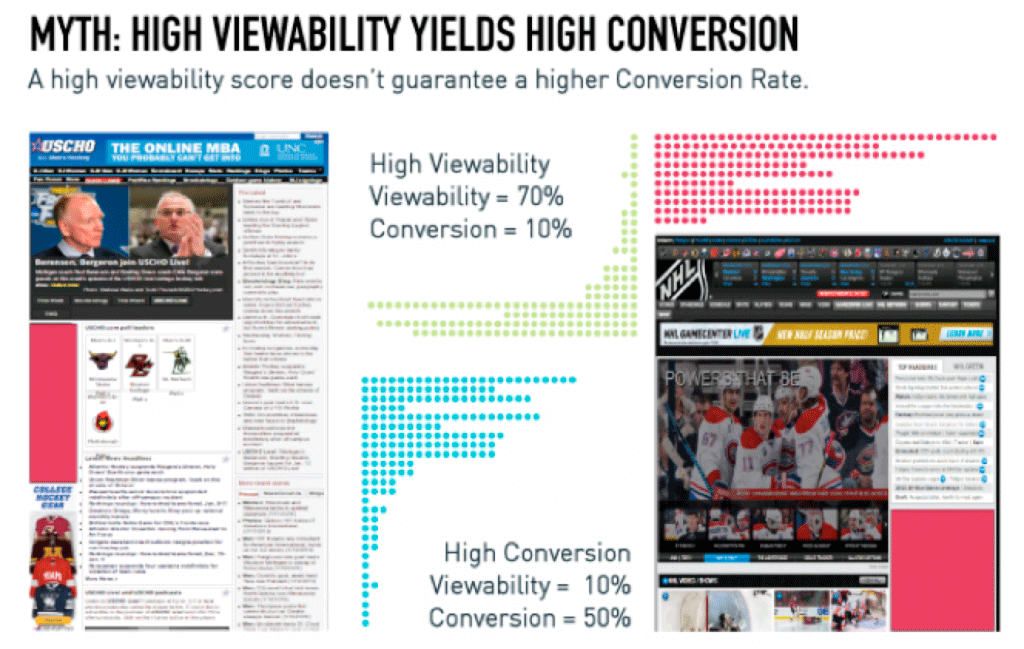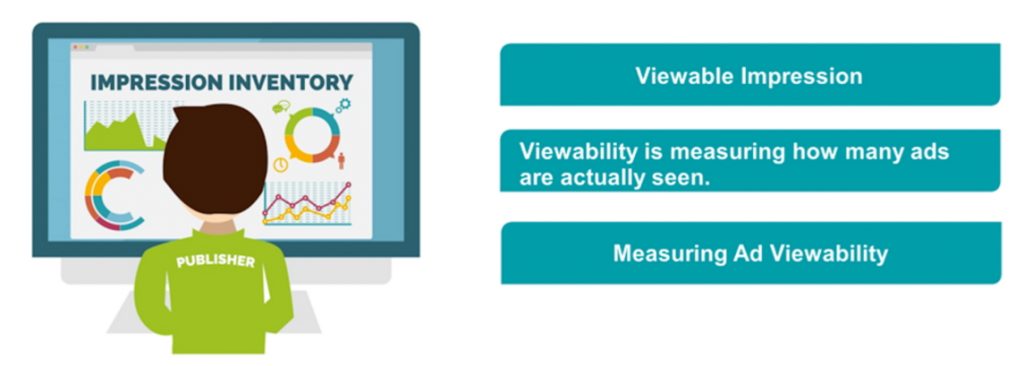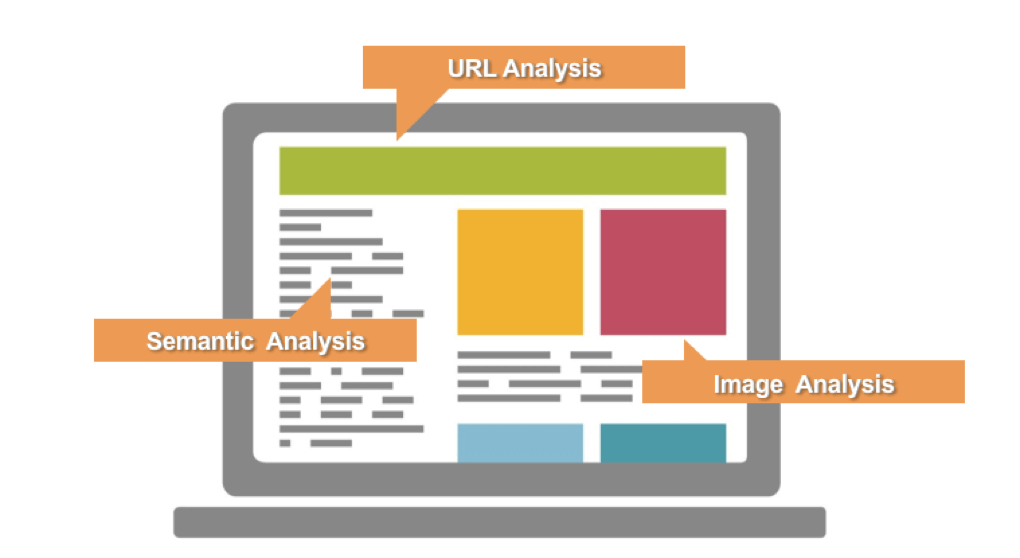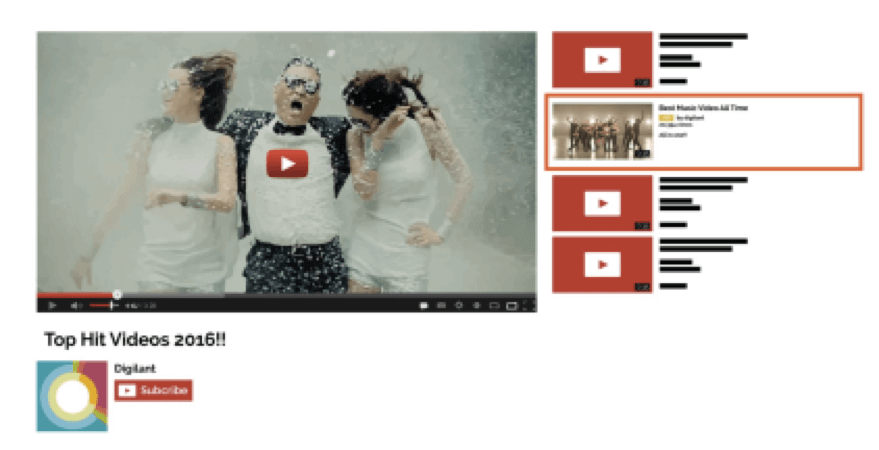Viewability refers to the likelihood that an ad is viewed by an actual human user. While that may sound strange, up to 57% of ads served are not considered viewable.
What does it take to consider an ad viewable?
Impressions are considered viewable for both desktop and on mobile when they appear within a user’s browser and have had the opportunity to be seen. Industry standards for display ads are as follows: 50% of the ad has to be visible on the screen for at least 1 continuous second. For larger banner ads on desktop or mobile, only 30% of the ad pixels need to be on screen for one continuous second for the ad to be counted as viewed. For video ads, the viewability standard is different, the ad must have at least 50% visibility on screen, and must have been viewable for at least 2 seconds.
Viewability as a key performance indicator
Viewability has become an important metric. Digital marketers want to confirm that ads are seen and their campaigns perform as expected. Beyond validating that advertisers get what they paid for, using viewability as a metric also provides insight into the quality of impressions and evaluates the quality of a publisher’s inventory.
The need to be seen
The increasing demand for 100% viewability may mean that much of publishers’ inventory is no longer sellable. With a drop in the amount of inventory that advertisers are willing to buy, publishers would have to increase the CPMs to make up for the gap in revenue. Delivering 100% viewability isn’t necessarily impossible for publishers; Facebook for example is currently guaranteeing 100% viewability.
However, not all advertisers are demanding 100% viewability; some advertisers report desirable performance results–such as click through rates (CTR)–are coming from inventory with only 60% viewability. In direct response (DR) campaigns, KPIs are independent of viewability, measuring conversions over impressions, using a Cost Per Click (CPC) or Cost Per Acquisition (CPA) pricing model. But CTR or conversions aren’t as useful of metrics when the campaign goal is to drive awareness.
How to measure viewability
For both mobile and desktop – banners and videos – viewability is measured through various ad verification strategies by different platforms. Verification strategies are based on industry standards and provided by companies that enable third-party measurement and ad verification.
Digilant is integrated with the top tier third-party measurement and ad verification vendors, including DoubleVerify, Sizmek’s Peer39 and Integral Ad Science, to block programmatic advertising fraud on a pre-bid basis and to filter suspicious traffic. Sites with content promoting hate speech or illegal activity are excluded from the market and added to a dynamic block list.
Verification helps to ensure viewability and identify ad fraud — such as nonhuman traffic from bots registering clicks — which is never considered viewable. But viewability alone doesn’t guarantee better performance.
What does viewability do for your campaign?
Viewability doesn’t guarantee increased ad performance, but viewability and performance are linked.
For example, studies have shown that how long an ad is continuously visible has a higher impact on performance than the percentage of the ad viewed.

Players in the ad tech industry such as Integral Ad Science, comScore, and the Interactive Advertising Bureau are all working toward understanding viewability, setting standards and guidelines. However, discrepancies in counting methodologies still exist — both in the final numbers and in the methods themselves.
Summary
It’s helpful to keep some more qualitative factors that improve viewability — and improve performance — in mind. While it’s trickier to define metrics for all aspects of viewability, advertisers should keep certain aspects in mind that might impact their viewability, such as:
- Viewability is defined as a display ad that is at least 50% above the fold, for 1 second – or 2 seconds for video.
- Viewability as a KPI helps advertisers gauge the value of inventory.
- There is an increasing demand for 100% viewability, which could impact pricing from publishers.
- Both measurable and qualitative factors impact viewability, which impacts ad performance.
- Buyers need to keep best practices in mind when buying inventory, like keeping logos at the top of ad creative and avoiding ad clutter.
Ready to optimize your ad performance? Start leveraging viewability metrics to enhance your campaigns and drive better results with Digilant today.







